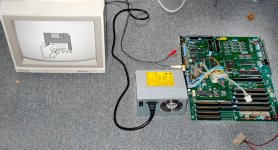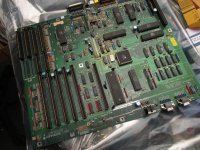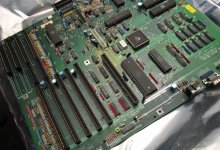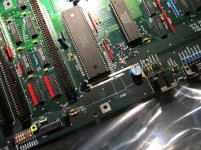clh333
Veteran Member
In that configuration, just power supply and motherboard, does the power LED show any activity other than powering on?
That is, does it
1) turn on immediately on power up and always stay the same brightness
2) turn on immediately and after a short delay brighten
3) ever flash bright/dim, and if so after 1 or 2 above?
What version Kickstart ROM do you have?
What do you see on a composite monitor, if you can plug one in to the monochrome jack?
Do you get a raster? What colour is it? Does the colour ever change? (Brightness in stead of colour if monochrome.)
To answer your questions:
The power LED lights as soon as the power supply is switched on. It glows at half-brightness for about two seconds and then full brightness thereafter. I attached a 1902A monitor in mono video mode and got the progression of shades of grey, ending with an "Insert Workbench 1.3" disk prompt.
I took the floppies (Chinon FB-354) apart and cleaned them. I took the power supply apart and cleaned it. Everything was very dusty but no visible signs of corrosion, except on the fan guard on the power supply.
What's the next test? (And by the way, thanks again for your guidance!)
-CH-
Pics:





